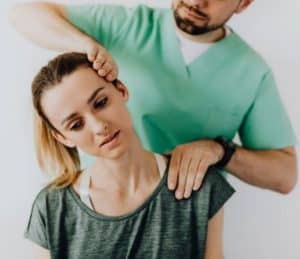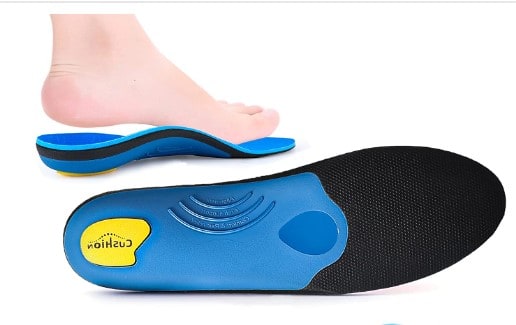Cycling is supposed to be fun, but sadly, not all of us can claim it to be so. Often, that’s because we have to endure saddle soreness, lower back pain, and numb toes, to name a few cycling injuries. There’s good news, though; most of these injuries are preventable. So, how can you prevent injury while cycling?
You can prevent most cycling injuries using the correct handlebar, saddle, and cycling gear. Don’t forget about stretching out before cycling and adjusting your handlebar and seat, as the approaches can also prevent cycling injuries.
It’s essential, nonetheless, to know that the preventative approaches may differ from injury to injury. Thus, you should familiarize yourself with various injuries and learn how to address them individually.
Well, that’s where I come in. I’ll share with you the most typical cycling injuries and their prevention tips. Let’s get started!

How Can You Prevent Injury While Cycling? (10 Common Cycling Injuries and Preventions)
1. Saddle Sores
Nothing is as uncomfortable and painful as saddle soreness. The problem with this cycling injury is that it can be a source of other complications. So, you have to act fast here.
Prevention
First, consider wearing comfortable cycling shorts to reduce saddle soreness.
Second, change your saddle or invest in a good saddle cover.
But remember, using chamois/emollient cream like the Chamois Butt’r Original Anti Chafe Cream can reduce saddle soreness.
Also, learn to change your saddle position often and clean up the saddle after cycling.
2. Lower Back Pain
We cannot talk about how to prevent injury while cycling without mentioning the lower back.
Remember, cycling requires you to curl over the handlebar, more so when going uphill.
Unfortunately, that often means putting too much pressure on the bike handlebar. The more you do it, the likelier you are to strain your lower back.
Unfortunately, it’s not just the pain that is concerning but also the risk of interfering with your spine curvature.
Prevention
Learn to stretch before cycling so you can relax your back muscles. Also, work on your core strength as it makes you a stronger rider.
You can also raise the bike handlebar or invest in a Mackenzie pillow like the Original McKenzie Lumbar Roll to reduce pressure on the lower back.
3. Shoulder Pain
If your upper body is not relaxed, there’s always the risk of your shoulder muscles becoming stiff, culminating in shoulder pain.
The other issue is the width of your handlebar. If it’s too narrow or too broad, you’ll strain your shoulders when cycling.
Prevention
Generally, one of the best ways to avoid injury while biking is to relax your body. So, try as much as possible to relax your upper body when cycling. That’ll prevent shoulder strain to some extent.
You can also try slugging them after a 15-minute interval when cycling. While at it, bend your elbows as you tilt the head often.
And if the handlebar is too narrow or too wide, replace it.
4. Neck Pain
The neck muscles are naturally not the strongest. So, they get tired quickly, and when they do, they tighten up, leading to unbearable pain.

Remember, the neck muscles support your head and helmet, and so they shouldn’t strain. Unfortunately, they do more when you use the wrong handlebar.
Prevention
Consider shortening the handlebar stem so that you can sit more upright. You can also loosen the handlebar grip to allow you to relax your shoulders and eventually relax the neck.
More importantly, correct your posture, which you can do with a kinesiology tape like the KT Tape Kinesiology Therapeutic Athletic Tape.
How Can You Prevent Injury While Cycling? More Tips
5. Achilles Tendonitis
Achilles Tendonitis refers to an injury to the Achilles tendons. The Achilles tendons connect your heel bone to the calf muscles.
More often, Achilles tendonitis occurs when you improperly use the cleats of your cycling shoes. But still, it can happen when you ride the wrong size bike.
Prevention
Start by ensuring that your bike fits you. If it doesn’t, get a new one. Also, check the saddle height to ensure it’s not too high.
The shoes should also fit correctly.
6. Hip Pain
Tight hip muscles often translate to pain on the hip. That usually happens when using the wrong saddle height.
Additionally, if your body is too stiff, you can experience hip pain when you cycle without first stretching.
Prevention
Check your seat height to ensure it is correct. If not, adjust it. Also, try stretching before cycling as that relaxes your hip muscles, preventing hip pain.
7. Knee Pain
So many cyclists hurt their knees because of these two main reasons:
- Wrong saddle position
- Wrong saddle height
In the first case, if your saddle is far away, the knee will strain and eventually hurt. And in the second case, if the bike saddle is too low or too high, the knee will still hurt.
Prevention
Change the saddle position and adjust its elevation to ensure that you can cycle comfortably.
8. Toe Numbness – How Can You Prevent Toe Numbness While Cycling?
Nothing annoys more than numb toes. It becomes harder to place your feet on the ground or even the pedals.
Overall, toe numbness could be a result of any of these reasons:
- Compressed toe nerves
- Tighter or ill-fitting shoes
- Inadequate arch support
- Improper blood circulation
Prevention
Overall, wearing the right cycling shoes is recommendable. Not only can they prevent toe nerve compression, but they can also facilitate better circulation.
What’s more, they offer you adequate arch support.
Alternatively, consider using orthopedic insole inserts like the Insertion Plantar Fasciitis Orthopedic Feet Insoles, which offer your feet immense arch support and relieve flat feel.

Not only does this tip prevent toe numbness but also cycling leg injuries. You can also prevent toe numbness by loosening your footwear and changing your seat height.
9. Hand Injuries – How Can You Prevent Head Injury While Cycling?
The most typical hand injuries are hand numbness, wrist pain, and hand shock.
Most times, the problem is due to using the wrong handlebar. If your handlebar lacks enough grips, your hand may start to hurt.
Keeping your hand or wrist in the same position doesn’t help either, as it often leads to a hand shock.
Prevention
Add handgrips to your handlebar if there are none. You can try the 607 Bike Handgrips that suit road bikes, MTBs, folding bikes, and BMX.
And when cycling, change your hand position as often as possible to improve circulation.
Furthermore, consider getting anti-slip and shock-absorbing gloves like MOREOK Cycling Gloves.
10. Fall Injuries – How Can You Prevent Fall Injury While Cycling?
In case of a fall, you can hurt your head, hands, back, or knees. The bad thing about most bicycle fall injuries is that they can turn fatal.
Prevention
Wear the right cycling gear to prevent heavy impact in case you fall from a bike.
Cycling Injury FAQs
1. What Are The Most Common Cycling Injuries?
Common bicycle accident injuries include:
- Saddle sores
- Lower back pain
- Shoulder pain
- Neck pain
- Achilles Tendonitis
- Hip pain
- Knee pain
- Toe numbness
- Hand injuries
- Fall injuries
2. Why Do My Sit Bones Hurt After Cycling?
Your sit bones could be hurting because of using the wrong saddle. If the saddle is too soft or extra firm, it may feel uncomfortable under your seat bones. So, go for medium firmness.
And if the saddle shape is wrong, more so an option that is too narrow, your seat bones will still hurt.
3. Why Is My Bum Sore After Cycling?
Usually, your bum will feel slightly sore immediately after cycling. It should, however, fade off in a few hours or minutes.
Remember, you are putting all your weight on the saddle, and your bum takes the impact. So, the longer you ride, the sorer your bum is likely to be.
4. How Do I Stop Getting A Sore Bum When Cycling?
Generally, you can prevent a sore bum when cycling using these smart tips:
- Wearing comfortable biking shorts
- Applying chamois cream
- Investing in a bike that fits you
- Keeping the saddle clean after use
- Adding a cushioned saddle cover to your bike seat
- Standing up in between the ride and doing it as often as possible
- Showering immediately after cycling to get rid of bacteria and dirt
5. Does Bike Seat Pain Go Away?
Most bike seat pains fade away in a few days. Some, however, take weeks.
If cycling pain continues for more than a month, it could indicate something serious. In such a case, you should see a doctor.
Closing Thought:
Generally, how can you prevent injury while cycling? I’ve shared nine common bicycle cycling injuries that you can avoid.
So, use the tips to ensure you start enjoying cycling and not just endure the experience.